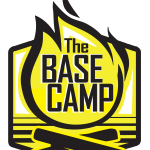 Recent Question: Bob, is it OK for the trustee of a special needs trust to purchase a $2,000 pure bred spaniel for the trust beneficiary, Edwina?
Recent Question: Bob, is it OK for the trustee of a special needs trust to purchase a $2,000 pure bred spaniel for the trust beneficiary, Edwina?
Recent Answer: Only if Edwina is not planning on eating the dog. I’ll explain. First, you’ll need to understand the SSI income rules and what In Kind Support and Maintenance (ISM) is. Distributions from a special needs trust might be income! The trick is in understanding how income is counted and what it does.
What is SSI?
Supplemental Security Income, or SSI, supplements the income of disabled persons or those aged 65 and over who meet certain low asset tests and have countable income from all sources less than $735 monthly (2017). SSI will insure that a person’s countable income from all sources, when combined with an SSI benefit, will equal the Federal Benefit Rate or “FBR” (which for a single person is $735). See the complete FBR chart on the Mason Law, PC website. For example, if a single person’s countable income is $500, then SSI will pay $235.
Usually the amount of SSI is not as important as the fact that someone is eligible to receive any SSI. In most states (including North Carolina and Georgia) receiving even $1 SSI will entitle the person to Medicaid (which for a disabled individual can be a life saver).
How Income Counts in SSI
An SSI eligible individual may not have countable income in excess of the FBR. Countable income will reduce the amount, dollar-for-dollar, that SSI pays. Income includes all amounts received from wages, other public benefits, annuities, gifts (in the month of receipt) and other noncash items such as food and shelter (or payments made for those expenses).
When calculating countable income, the first $20 of income from all sources is disregarded. Thereafter, the first $65 of earned income is disregarded, and after that one-half of earned income in excess of $65.
SSI Earned Income: Can Edwina Work A Little?
Maybe a little. For example, if Edwina, a disabled individual, occasionally answers phones at a local charity and earns $1,200, she will be eligible for $92.50 monthly SSI payments. Let’s do the math: Edwina earns (meaning she works for it) $1,200. Subtract $20 from $1,200 to get $1,180. Subtract the first $65 of earned income from $1,180 to arrive at $1,115. One-half of $1,115 will be the income excluded ($557.50). So, in other words, Edwina’s countable income is $642.50 ($1,200 minus $557.50). Accordingly, Edwina’s SSI benefit is $735 (the maximum SSI benefit) less $642.50 (countable income). She will receive a monthly SSI check equal to $92.50.
SSI Unearned Income: Can Edwina Receive Cash?
Maybe a little . . . a VERY little. Instead of working, say Edwina receives a $1,200 cash distribution from a special needs trust (or even from  a well-meaning friend or relative). SSI considers this unearned income (after all, she didn’t earn it). That means there are no earned income exclusions. $1,200 cash distribution, less the general $20 disregard yields $1,180. That is Edwina’s countable income. $735 (maximum SSI benefit) less $1,180 yields . . . TOAST. Edwina is toast! No SSI benefit.
a well-meaning friend or relative). SSI considers this unearned income (after all, she didn’t earn it). That means there are no earned income exclusions. $1,200 cash distribution, less the general $20 disregard yields $1,180. That is Edwina’s countable income. $735 (maximum SSI benefit) less $1,180 yields . . . TOAST. Edwina is toast! No SSI benefit.
What happens if instead of cash, the trust pays for certain items for Edwina? Say, for example, the trust pays for clothing, food, computer equipment, prescription drugs or therapy, entertainment, travel . . . or even a pet.
In-kind Support and Maintenance (ISM): Can Edwina Receive “Other Stuff”?
Now to the matter at hand: Can the trustee of the special needs trust buy the fancy dog for Edwina? It depends. Is Edwina planning on Fricasse of Fido (er . . . a feast) or is she planning for the emotional comfort that can only come from the unqualified love of a furry companion? The answer to those questions will determine whether Fido is In-Kind Support and Maintenance or ISM.
Sometimes trusts and other people give a disabled beneficiary certain non-cash items, or pay for non-cash items on behalf of the individual. If such an item is classified as ISM it will reduce SSI benefits. The amount of the reduction may not matter . . . or it could result in the beneficiary losing all SSI (and Medicaid). Of course, if the item is not ISM, it doesn’t matter how much it is worth as long as it is a non-countable asset for SSI purposes.
Items related to food and shelter are ISM. For example, rent or mortgage payments (shelter), utility expenses (shelter), groceries (food), restaurant food certificates (food), property taxes (shelter), or a Christmas gift from Omaha steaks (food) are all ISM. (Interesting side note: Cable, phone, and internet are not ISM).
If Edwina is planning on eating Fido, Fido’s value ($2,000) will be ISM. On the other hand, if Edwina does not intend to eat Fido, he is not ISM.
What Does ISM Do To SSI Benefits?
It depends. One of two rules could apply, depending upon the beneficiary’s living arrangement. If the beneficiary is living in the home of another for at least one continuous month and receiving both food and shelter without contributing her pro rata share of those costs, her SSI benefit is lowered by one-third of the FBR (or $245 in 2017). This is called the “value of the one-third reduction” or “VTR” rule (I have no idea where they get “VTR”).
The problem with the VTR rule is it is “all or nothing.” If the rule applies, the beneficiary’s SSI is reduced $245 regardless of the actual value of the food and shelter received. If someone is receiving $735 SSI, the reduction to $490 might be a good deal (especially if the food and shelter is high quality).
Two conditions must be met for the VTR rule even to apply: (1) living in another’s home rent free, and (2) receiving free food. If those conditions aren’t met, the rule doesn’t apply.
If the VTR rule doesn’t apply, then the “presumed maximum value” or “PMV” rule applies. Under this rule, if the beneficiary receives any ISM during the month, the value of the ISM is “presumed” to be $245. “Presumed” means that if the beneficiary can prove that the ISM wasn’t worth $245, the SSI benefit will be reduced only by the actual value of the ISM. On the other hand, if the ISM is worth more, the value is still “presumed” to be $245 and the SSI will be reduced accordingly.
 As For Fido . . .
As For Fido . . .
So . . . if Fido (worth $2,000) is meant for the dinner table (gross), he is ISM. If Edwina’s SSI is more than $245 and she doesn’t have other offsetting earned or unearned income, then she’ll be OK (other than, I presume, a bit of indigestion). On the other hand, if Edwina’s SSI is less than $245 and Fido is ISM (food), she is . . . . 

Leave a Reply